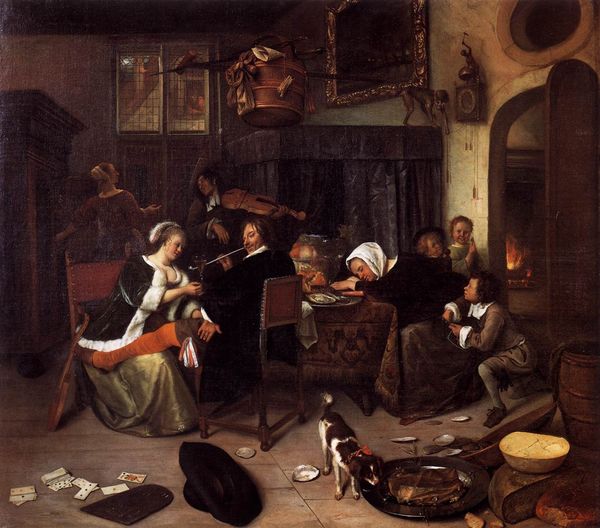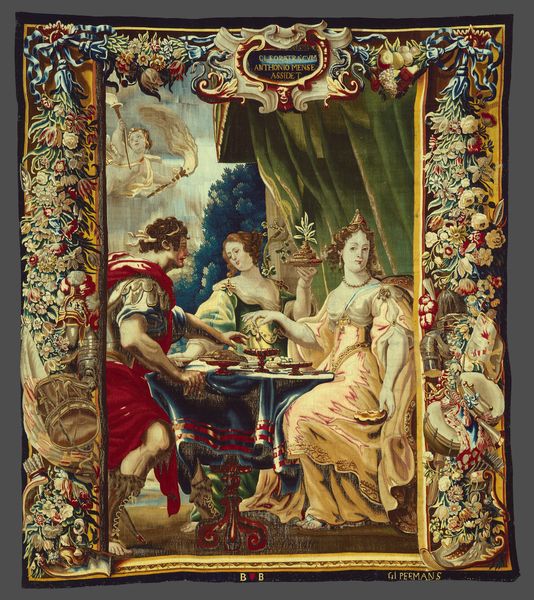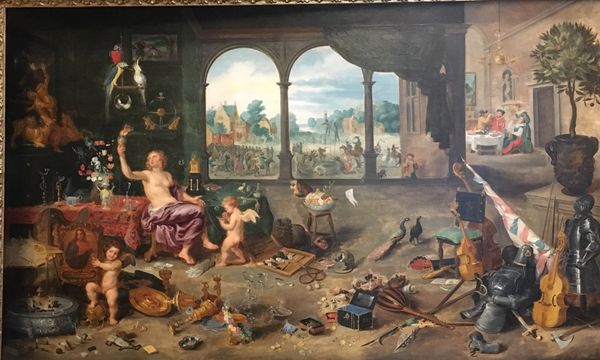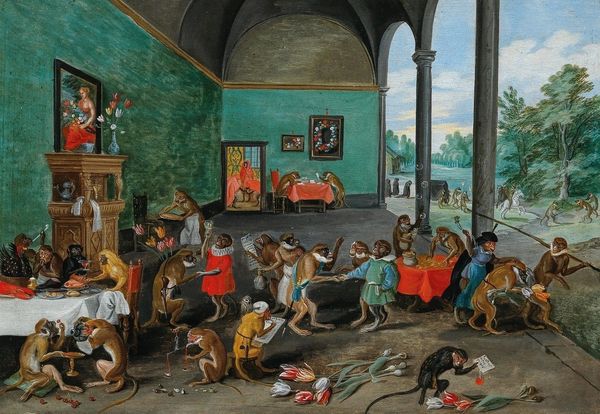
oil-paint
#
portrait
#
allegory
#
baroque
#
oil-paint
#
landscape
#
intimism
#
cityscape
#
genre-painting
#
history-painting
#
nude
#
mixed media
Copyright: Public domain
Editor: This is Jan Brueghel the Elder's, *Allegory of Hearing*, oil on panel, from around the early 17th century. There’s just so much going on – instruments, people, birds... It feels overwhelming, but also really opulent. How do we even begin to unpack the symbolism here? Curator: That sense of overwhelm is crucial, actually. Consider the historical context. What does it tell us about a society that values such sensory overload? It's a display of wealth, knowledge, and power—a performance for the elite. Look at the way the female figure is positioned in the landscape. Is she in control? Editor: She’s playing an instrument, so I suppose she is contributing to the 'hearing' theme. But I do feel like she and the child with her are placed *within* the space, more like decorations... Curator: Exactly! How might a feminist reading of this work challenge the assumed power dynamics? Think about the gaze, who it's intended for, and how the female body functions as an object of pleasure and status. How is she implicated in this world of wealth? What does it mean to portray the allegory of hearing as the enjoyment of privilege and ownership? Editor: So, instead of just a painting about sound, it's also about class and gender? I hadn’t considered it that way. The overabundance makes a different kind of statement when you factor that in. Curator: Precisely. It prompts questions about access, representation, and the very structures that allowed such a scene to be created and consumed. It moves us away from simple aesthetics and closer to a social commentary. Editor: This has given me so much more to think about than just what sounds they’re depicting! Curator: Hopefully, it’s illustrated how deeply intertwined art is with broader societal concerns and power dynamics, shifting our perception.
Comments
No comments
Be the first to comment and join the conversation on the ultimate creative platform.














